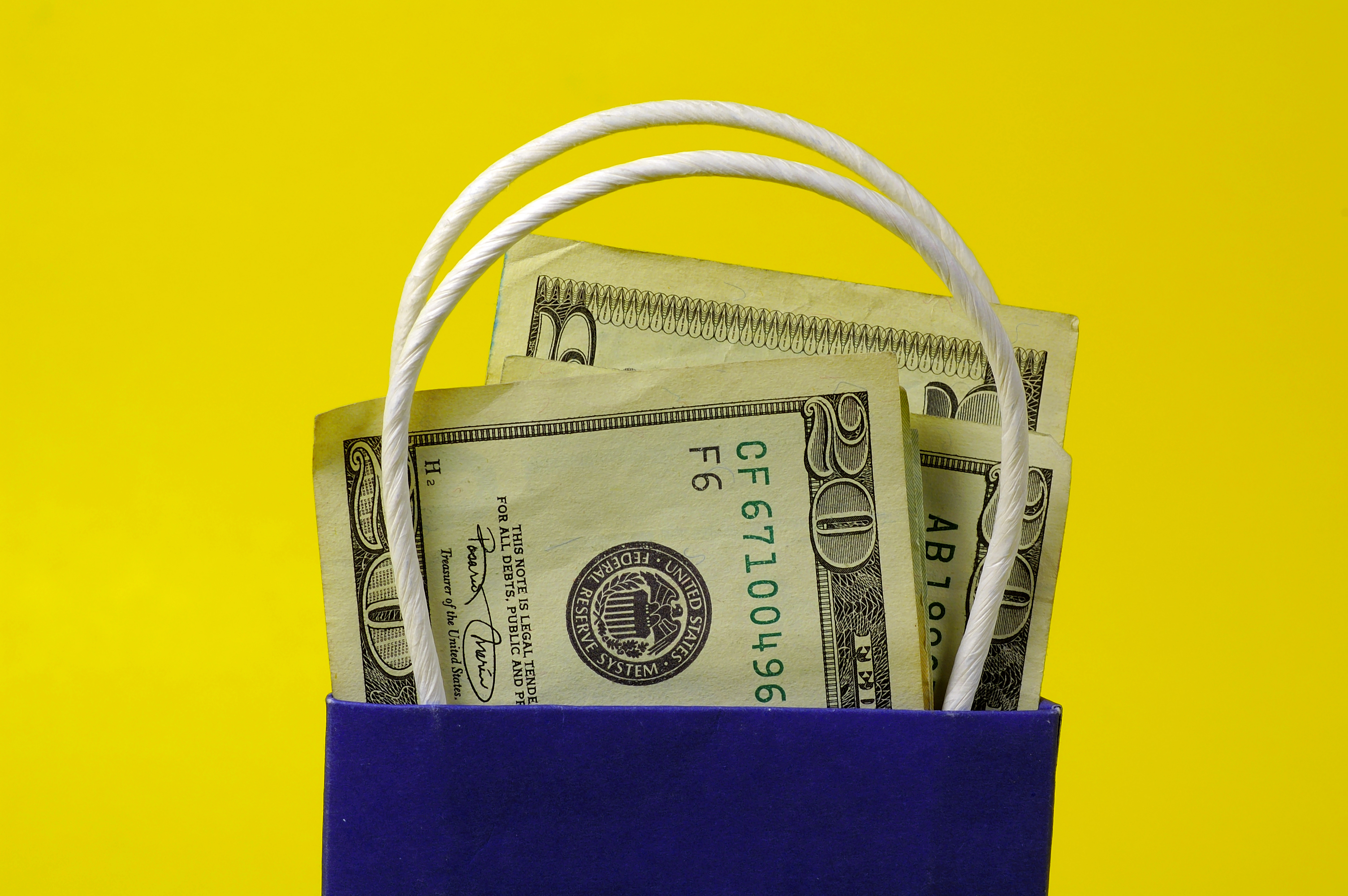Your High-Yield Savings Account Is About to Look Less Appealing
High-yield savings accounts are about to pull less of a punch. Here's a look at what to do with your savings once interest rates drop.

Those nice, safe returns on cash sure have been sweet, but don’t count on them lasting. After years of near-zero yields, interest rates began a rewarding upward climb in 2022. In early 2024, prime money market funds yielded an average of 5.1%. You could find one-year certificates of deposit at 5.5% and high-yield savings accounts cresting 5%. Those yields handily beat inflation, which rose 3.4% overall in 2023. Little wonder that investors have added more than half a trillion dollars to money market funds in the past 12 months.
But the Federal Reserve’s expected interest rate cuts in 2024 will sap yields on all kinds of savings accounts and safe, short-term investments. Investors are betting that the Fed will cut interest rates faster and deeper than it has publicly telegraphed, perhaps pushing money fund yields below 4% later this year. Most economists expect inflation will fall also, potentially keeping inflation-adjusted returns on cash in the black. Still, the prospect of more-anemic interest rates is sparking many investment professionals to suggest that investors rethink their plump cash positions.
“It was definitely the right move to go to cash in 2022” after the Fed started raising interest rates, says Benoit Anne, a managing director at MFS Investment Management. “But everything comes to an end,” he says. “You are going to leave a lot of chips on the table if you stick with a high cash allocation in 2024.”

Sign up for Kiplinger’s Free E-Newsletters
Profit and prosper with the best of expert advice on investing, taxes, retirement, personal finance and more - straight to your e-mail.
Profit and prosper with the best of expert advice - straight to your e-mail.
Investors seeking safety by loading up on cash may neglect to protect their portfolios from three other important risks: inflation that reduces their purchasing power; the risk of having to lock in lower rates when it comes time to reinvest; and opportunity cost, or the risk of self-destructive regret if you miss out on a bull market in some other asset class.
It’s understandable that many investors are reluctant to “leave the nice, warm bed of high money market rates,” says Lauren Zangardi Haynes, a certified financial planner based in Richmond, Va. But she’s urging her clients to adjust their portfolios for lower interest rates. That doesn’t mean taking the financial equivalent of a polar bear plunge into stocks and bonds, she says. “You don’t have to go all in all at once. Put your toes in. Put a little bit of money in every month and stick to that plan,” she advises. Consider some options, below. (Prices, yields and other data are as of January 31, unless otherwise noted.)
Find your way into fixed income
Though the highs might already be behind us, it still pays to lock in some of today’s still-enticing yields. Rob Williams, managing director of financial planning at Charles Schwab, suggests building a ladder of CDs or Treasury securities by spreading out the money among investments that come due in two, three, four and five years. At the end of January, a five-year Treasury note yielded 3.9%.
An easy way to wade into the broader fixed-income market is with a diversified core bond fund. Fidelity Total Bond (symbol FBND), a member of the Kiplinger ETF 20, the list of our favorite exchange-traded funds, has a duration of just over six years, meaning the value of the fund will rise roughly 6% if rates fall one percentage point. (Prices and interest rates move in opposite directions). The actively managed fund, yielding 5.1%, divides its portfolio roughly into thirds among government IOUs, corporate bonds and mortgages. Its expense ratio is 0.36%.
You can also trust the superb bond-picking skills of the managers of Baird Aggregate Bond (BAGSX), another intermediate-term core fund and a member of the Kiplinger 25, the list of our favorite actively managed funds. It charges 0.55% in expenses and yields 4%.
Once you get your feet wet, explore the bargains on offer in the bond market now, suggests Pramod Atluri, a fixed-income portfolio manager for the Capital Group, home of the American Funds. But be choosy. “You should only take risks when you’re getting paid to take risks,” he says. Atluri sees promise now in government and agency-backed mortgage bonds.
Mortgage funds generally languished in 2023 as rates rose and investors focused on other types of bonds. But as rates reverse course, there’s plenty of room for price gains on top of a healthy yield, Atluri says. And risks are low, even if homeowners default, because of guarantees from Uncle Sam or government-sponsored enterprises. American Funds Mortgage Fund (MFAEX), available without a sales charge on fund platforms including Fidelity and Schwab, charges 0.63% in expenses and recently yielded 4.2%.
Or consider Vanguard GNMA (VFIIX), which invests in bonds backed by the Government National Mortgage Association (Ginnie Mae). It has a solid record, charges an expense ratio of 0.2% and yields 3.2%.
Step carefully into stocks
In early 2024, many investors may be leery of a stock market trading at record highs and dominated by a handful of enormous technology stocks with sky-high valuations. Stocks in the S&P 500 index recently traded at a price-earnings ratio of 20, compared with a 10-year average P/E of 17.6, according to FactSet Research.
Savita Subramanian, head of U.S. equity strategy at BofA Global Research, suggests investors opt for stocks trading at more-reasonable price-earnings levels. So-called cyclical stocks, or those most sensitive to economic swings, are “neglected and inexpensive,” Subramanian says, and she counts banks and financials among the sectors positioned to do well.
Subramanian is especially bullish on dividend-paying stocks. While the Magnificent Seven have soared, “everything else has flatlined,” she says. “Dividend stocks are trading at a 30% discount to the rest of the market, the biggest discount since 2000.” One option among the Kip 25 funds is Vanguard Equity Income Fund (VEIPX), which has a portfolio of nearly 200 companies with P/Es averaging about 13 and an average dividend yield of 3.4%.
Zach Jonson, chief investment officer of Stack Financial Management, suggests investors also focus on companies in sectors that have missed out on much of the recent bull market run-up. Health care and consumer staples companies have comparatively low average P/Es, he says. Consider investing a small amount in those sectors with ETFs such as Health Care Select Sector SPDR (XLV) and Consumer Staples Select Sector SPDR (XLP).
Because he expects economic trouble and market volatility in 2024, Jonson is keeping about half of Stack’s portfolio in cash or short-term bonds. But he’s bullish on Cigna Group (CI), a health insurer trading at 11 times expected earnings for the year ahead. Cigna’s 2024 revenues are on pace to rise nearly 19% compared with expected 2023 levels, according to analyst estimates compiled by S&P Global Market Intelligence, and earnings per share should be up 14%. Analysts see the shares reaching $354 over the next 12 to 18 months.
Jonson also sees value in some industrials, including Genuine Parts (GPC). “Its auto parts business is recession-resistant. People who can’t afford a new car are going to fix the old one. And it’s benefiting from industrial automation, the wave of the future,” Jonson says. The company has also increased its annual dividend for 67 straight years. Morningstar analyst David Swartz says the stock would be fairly valued at $161 per share.
If you want some principal protection but you also have a fear of missing out on potential bull market gains, consider one of the many new “defined outcome” ETFs. These funds, offered by First Trust, Innovator Capital Management and a handful of other issuers, use options to create a buffer against stock market losses, to varying degrees, over certain periods. The catch is that the strategy caps potential gains. “They are not a magic bullet,” cautions Schwab’s Williams, and they come with a lot of fine print.
Fighting FOMO
Pay attention to how you put your cash to work as well as to what you buy. David Blanchett, head of retirement research for PGIM, the investment management division of Prudential Financial, suggests parceling out any shifts in your cash allocation over time. Dollar-cost averaging, or investing a set amount at regular intervals, can take the emotion out of investing. It will also result in paying a lower average price per share in volatile markets, because you’ll buy fewer shares when prices are high and more when they are low.
Lastly, as you contemplate deflating your cash cushion a bit, think about the reason you’re holding cash in the first place. If it’s to be able to sleep at night, consider that it is almost impossible to time the market perfectly, says Blanchett. Regrets about missing out on an unexpected bull market can also keep you awake.
Note: This item first appeared in Kiplinger's Personal Finance Magazine, a monthly, trustworthy source of advice and guidance. Subscribe to help you make more money and keep more of the money you make here.
Get Kiplinger Today newsletter — free
Profit and prosper with the best of Kiplinger's advice on investing, taxes, retirement, personal finance and much more. Delivered daily. Enter your email in the box and click Sign Me Up.

Kim Clark is a veteran financial journalist who has worked at Fortune, U.S News & World Report and Money magazines. She was part of a team that won a Gerald Loeb award for coverage of elder finances, and she won the Education Writers Association's top magazine investigative prize for exposing insurance agents who used false claims about college financial aid to sell policies. As a Kiplinger Fellow at Ohio State University, she studied delivery of digital news and information. Most recently, she worked as a deputy director of the Education Writers Association, leading the training of higher education journalists around the country. She is also a prize-winning gardener, and in her spare time, picks up litter.
-
 Customer Services are Strained at the SSA, You Should Plan Around These Federal Holidays
Customer Services are Strained at the SSA, You Should Plan Around These Federal HolidaysIf you have a question or need information from a federal agency, check the federal holiday schedule to make sure you get your business done before they close.
By Donna LeValley
-
 Stock Market Today: No 'Powell Put'? No Problem
Stock Market Today: No 'Powell Put'? No ProblemInvestors, traders and speculators look beyond both another Trump post and more signs of slowing economic activity.
By David Dittman
-
 ABLE Account: A Savings Tool to Empower People With Disabilities
ABLE Account: A Savings Tool to Empower People With DisabilitiesAn ABLE account can improve quality of life for individuals with a disability — it permits tax-free saving for ongoing expenses without jeopardizing benefits.
By Ella Vincent
-
 20 Ways to Clean Up Your Finances This Spring
20 Ways to Clean Up Your Finances This SpringSpring cleaning is therapeutic and stops costly problems from building up around the home. Why not tackle the dusty corners of your finances at the same time?
By Lisa Gerstner
-
 Planning Summer Travel? Use These Strategies
Planning Summer Travel? Use These StrategiesTo save money on summer travel, book your tickets well ahead of time, use technology and avoid popular destinations.
By Sandra Block
-
 The 'Concerning Trends' in Retirement Now
The 'Concerning Trends' in Retirement NowAmericans are less satisfied with their life in retirement and cite inflation and higher healthcare costs as just two of the problems they're facing.
By Janet Bodnar
-
 Private Jets Are Within Reach for Wealthy Retirees
Private Jets Are Within Reach for Wealthy RetireesRealizing an adult fantasy like booking a private jet doesn’t come cheap. But so what?
By Yvette C. Hammett
-
 An Inventory of What We’ve Endured: After the Wildfires
An Inventory of What We’ve Endured: After the WildfiresA traumatic experience like the California wildfires reminds us of other losses we've endured. But simple tasks return us to the present and drive away despair.
By Bob Sipchen
-
 The Benefits of Sharing a Joint Bank Account With Your Parents
The Benefits of Sharing a Joint Bank Account With Your ParentsOpening a joint account provides a way to monitor an older person’s finances.
By Ella Vincent
-
 Grandparents: How Do You Handle Gifts for the Grandkids?
Grandparents: How Do You Handle Gifts for the Grandkids?Can you give generously to grandkids without spoiling them or resorting to digital gifts? Here's how one grandmother and her friends have done it.
By Janet Bodnar